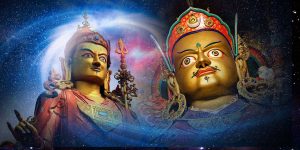Ghosts, Nagas, Demons and Duality: Are Supernatural Beings Cogenerated, Illusory, Dream or Ultimately Real?
One of the main obstacles to discussing phenomena such as ghosts, demons, gods, nagas, or any other supernatural thing is that our current secular rationalist paradigm only understands or allows for one analytical framework of explanation. It positions internal hallucinations or projections, a.k.a. fantasies, or conversely materially measurable phenomenon a.k.a “reality” as separate. From a Dharma point-of-view, this approach is primarily a mistaken, dualistic view.
By Josh Reichmann
[Bio below]
Internal Projections vs Perceived Manifestation
The principle that is a hurdle for most of us — or a seeming logical fallacy preventing us from insight — is that our internal projections differ only in quality to our received and perceived external atmosphere.
From a Dharma point of view, specifically, as I believe the Madhyamika school would tell us (more specifically the Prāsaṅgika, Thal’ gyur pa) — our dreams and daydreams are conjured or arising memory spaces delivered from the conscious, unconscious, cellular, atomic, and karmic memories that define us. The waking life or external world that we perceive as solid is simply another texture of this perception structuring of phenomena.
So, while things exist external to us in a relative sense in the mundane realm, they are ultimately no different from dream elements; in fact, we react emotionally just as strongly to both. They do not differ on a fundamental level related to Karma and the dualistic deluded perception of our polluted sense gates.
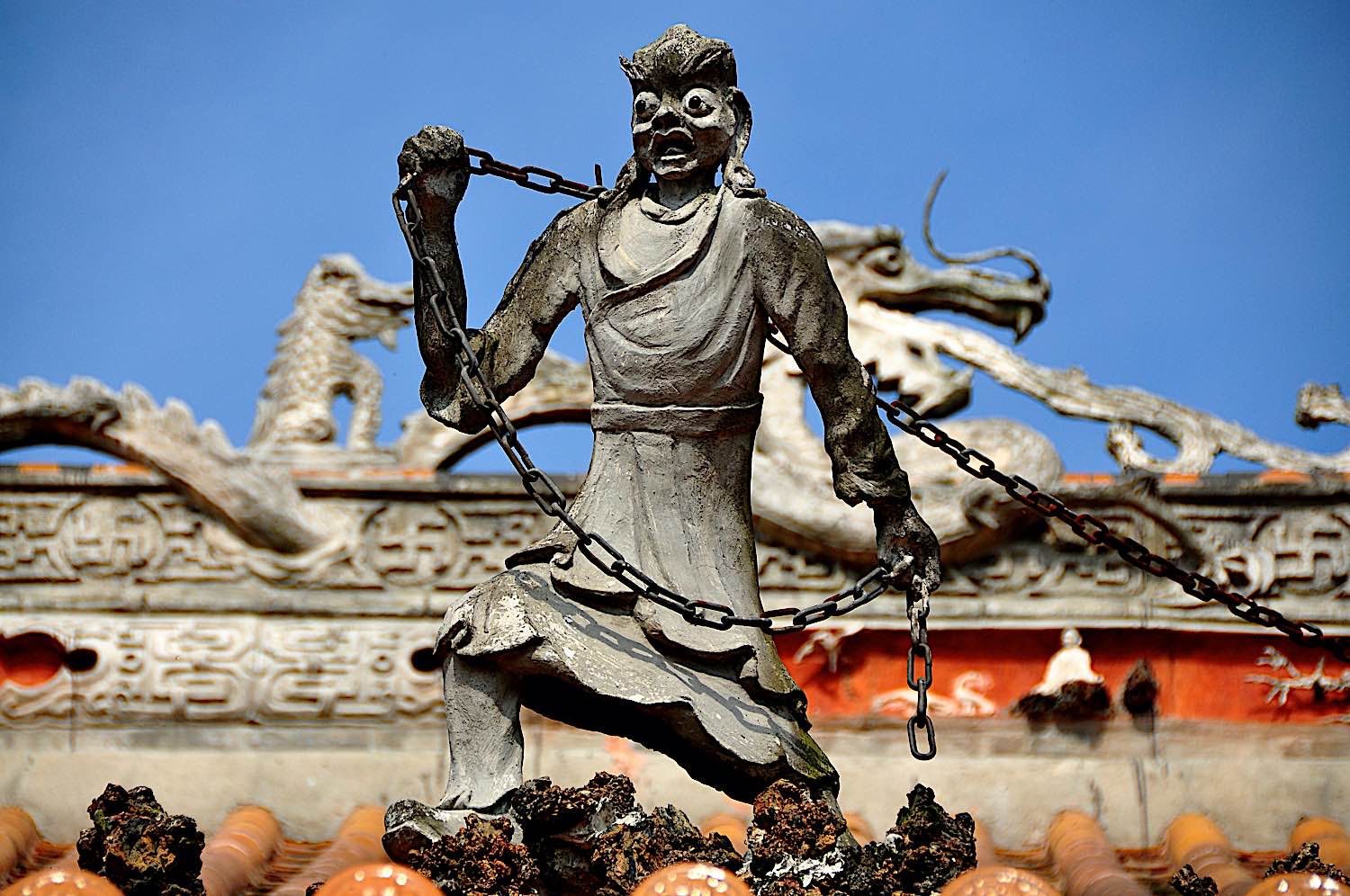
Our reaction to phenomena determines our experiential quality of being and builds conviction in our reality as firm or intransigent. This belief propels us into a world view, or realm views that we take as stable, and this way, it continues emanating for us.
And so we go on our way in that world system, or a similar one — birth to birth, moment to moment, all of it-underpinned by consciousness and produced by delusion.
When We See a Ghost What Are We Seeing?
With meditation and the correct view, we realize that while there are conventional differences between the mind’s dream, inner visions, and the elements constituting our physical selves and the environment perceived around our body, they are no differences for our grasping mind. The egoic mind desperately wants to know where to go for relief, for meaning. That is the persona mind. A mind or psyche built of fleeting desire and the many poisons that generate a protective shell of selfhood that is constantly punctured and sensing danger.
So, when we see a ghost, what are we seeing? We see the same thing as when we see a person, in the sense that our Karma has delivered a sense-based object, which in this case happens to be consciously arising for us, and from its own side, as a sentient being.
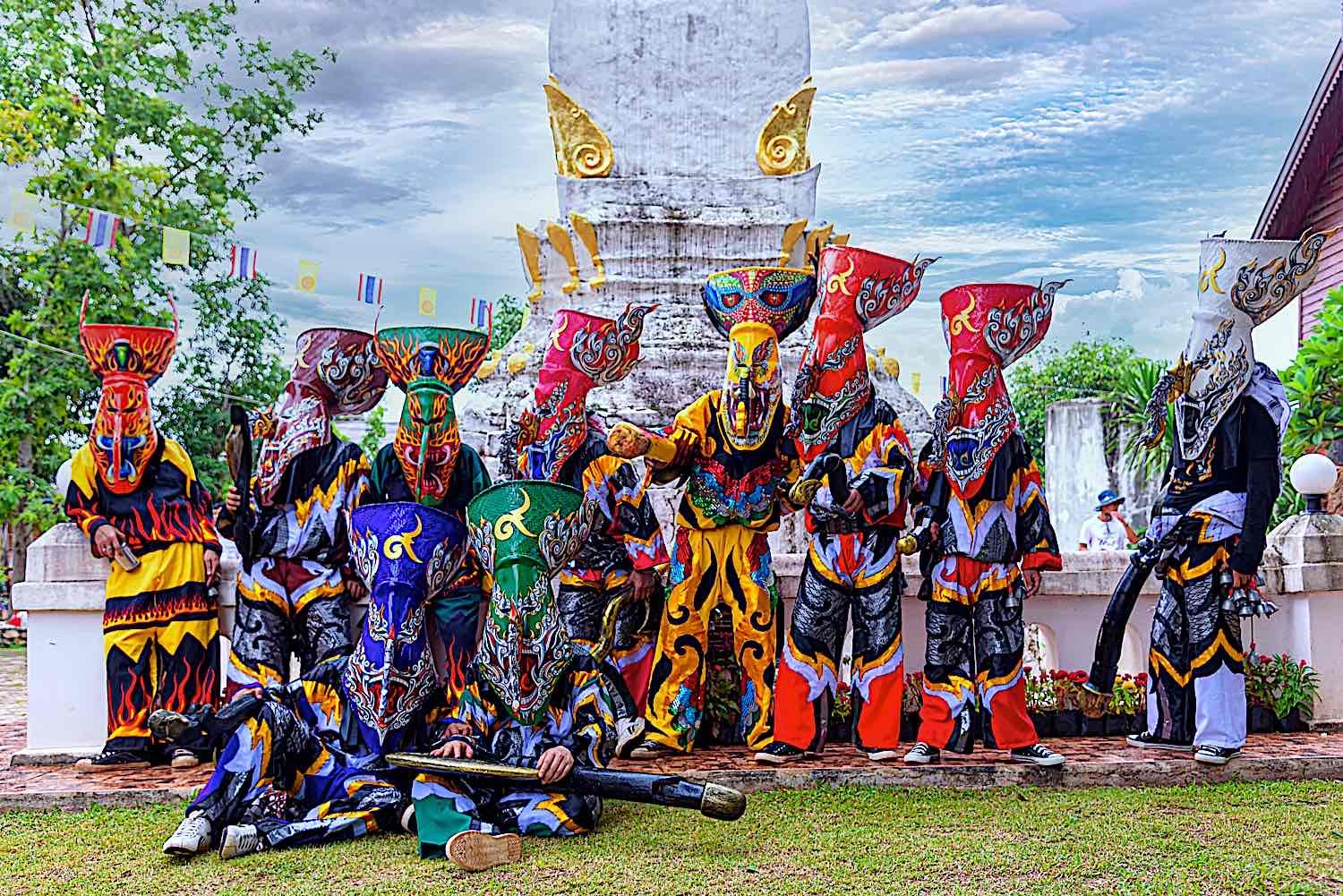
With its very young systems of psychology and pathologizing of experience, the western paradigm would suggest that such an apparition is born of our projected fantasies or is rooted in a dissociative embellishing of our external world.
In other words, the western or current paradigm of mind and materiality says- “you have just thrust something from your psyche into the externalized world as a way to encounter and make sense of it.”
Mental Lens or Aperture of Awareness
This view is not entirely false! But it is only a third correct. As I like to call our quality and capacity of descriptive consciousness, our “mental lens or aperture of awareness” will narrow in on objects as they manifest, setting up our quality of mind.

That quality is like a magnet for correlating forms. This is where the middle path comes in. Things arise from both sides, not just as mind-produced projections but also not simply as substantially solid or permanent objects observed; they are also not independent of our perception. (The quantum is the space that tethers the observer and the observed in the material sciences and current physics).
So a ghost is visible to us because we are attuned to the ghost. Are we fabricating the ghost? No. And yes. We are cogenerating the occurrence of the thing, like all things, including beings.
The Great Dharmadatu
We bring all phenomena into awareness by perceiving them through our obscured sense gates, and they ALSO manifest for us from their own side. So- all sense-perception objects and phenomena are interdependent. Like attracts like. The sense gates are obscured because we are not enlightened. If we were, we would see things as they are – the coming and going of the phenomenal display as empty refracting light. Without origin, destination or attributes that a samsaric being could comprehend. The great Dharmadatu. (Ed. Dharmadatu — Ultimate Reality or Dimension.)

Our internal projections are like portals for external ones to eventually find form through, and forms are generated with our focal lens of awareness, apprehending them. This middle path view remains true in all realms in Buddhist cosmology — it is a cogenerated cosmos, all conscious, conjured, shared, and individual hallucinations alike. This is why ghosts and demons and other beings we consider supernatural are all possible and in interaction with us, like everything else.
Relative Level: Patterns of a Realm
On a relative level, the activities of these supernatural beings have lives And their bodies are stable constants dependant on the patterns or laws of a realm. Still, ultimately it is all transient and misapprehended projected phenomena based on our limited spectrum of awareness. And they are coming and going in form, just like us.
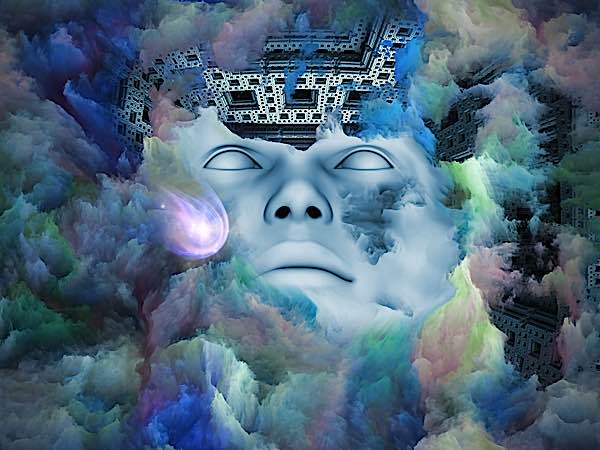
More on ghosts and demons.
These two, precisely, are both a variety of things. A ghost can be — for conventional purposes — seen as a mindstream or energy body that has left a signature aspect of itself in a physical place and space. That “place” would not only be in our world system but would emanate across various astral dimensions or the higher/lower realms, such as what we encounter in the bardos, a blending of realities. For more on the Bardo, see>>
Ghost Dwell in their Memories?
Specifically, the “astral dimensions” where a ghost might dwell are most closely associated with a ghost’s memory of locations in this world. That is why the ghost would come and go, slipping between worlds, as it were. Its body is between spaces. Remember, all phenomena cogenerate, are mind produced, memory enhanced, karmic landscapes of impermanence. This includes the body.
A ghost is simply a mindstream that has not found its way between manifestations.
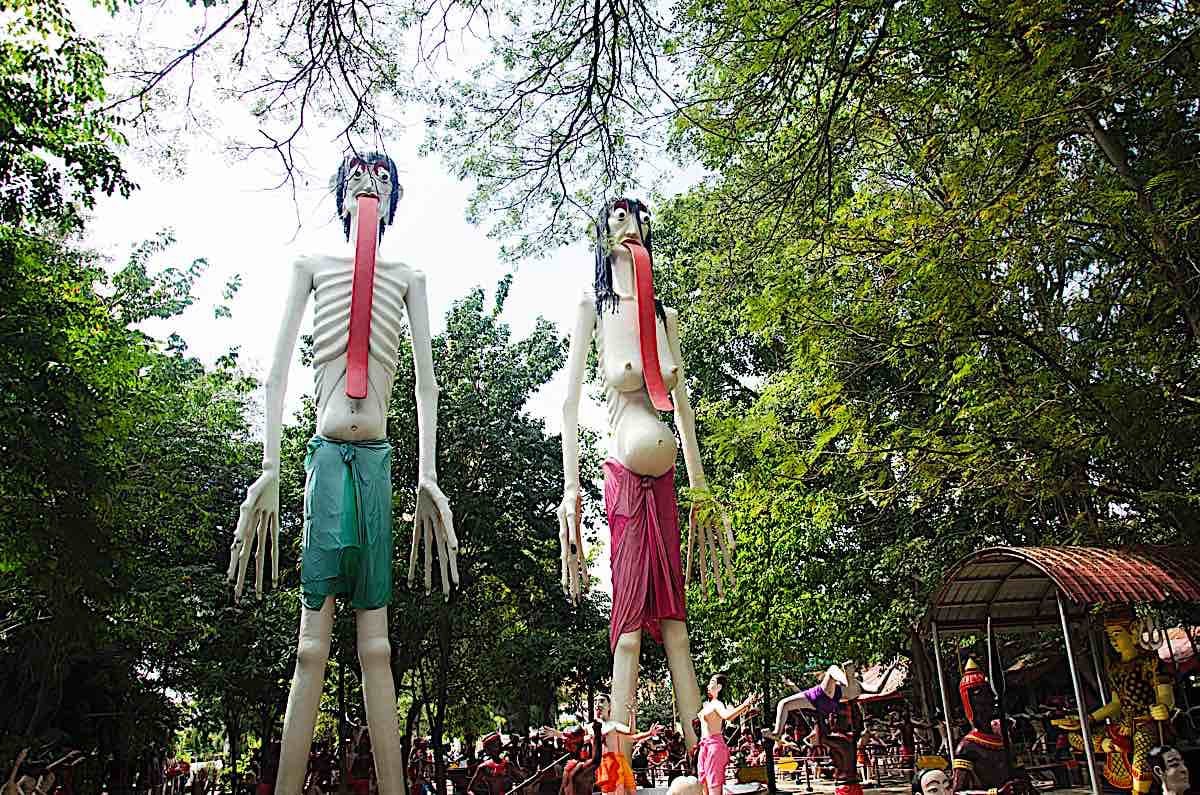
Is that ghost aware of this coming and going between worlds? No. But are we aware of the true nature of our reality? No. Both a ghost and a corporal being like us live in a bardos of confusion. A bardos is less of a different place. Instead, it is a state of delusions. We hop from bardos to bardos, and these worlds overlap, including the ones our mind attracts to at death and the ones we inhabit while alive. This causal interdependence explains how we perceive ghosts. [For more on Dependent Arising, see>>]
They cannot conceive and realize the true nature of reality, so they and we both carry on with our desires and habits- rebirthing where we are accustomed to or to where the karmic winds send us based on our habits.

Demons: Anger, Jealousy, Hatred, Lust, Obsession…
This Karmic activity is also true for what we call demons, but demons are simply a more solidified force of mind and energy. Anger, jealousy, hatred, lust, obsession, etc.— these emotional states do not just occur for us as emotional articulates of our character, persona, or discursive mind. Instead, they are qualities that the mind carries forward and temporarily stabilized onto any object or subject. So we can think of them as forces like the elements and resulting weather. These forces move through our minds and bodies’ many layers and ripple out.
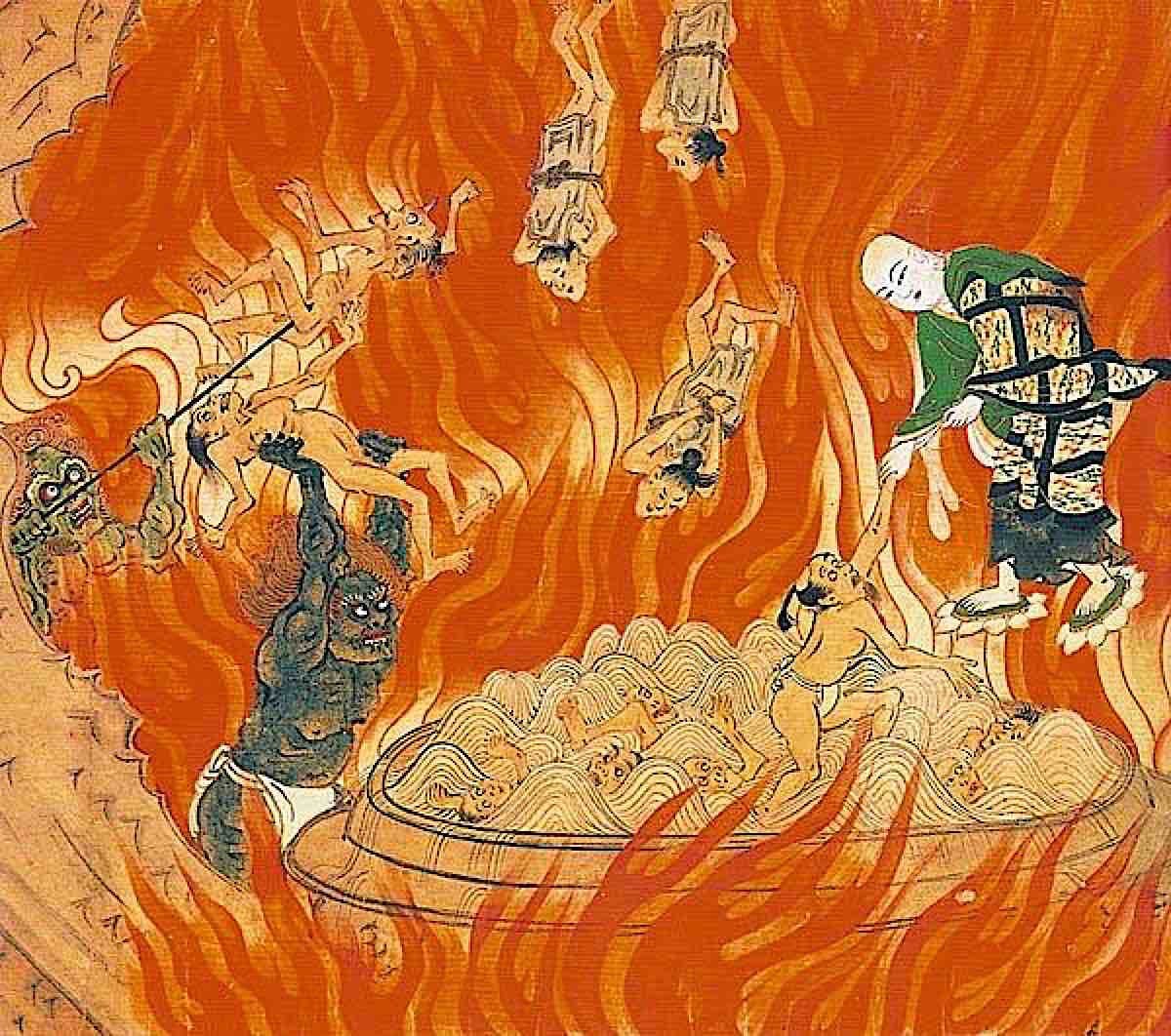
Weather is a conglomerate of attributes, but a storm is different from a clear sky or a sunny day. Like a demon, a storm devours what comes into its path; even if it is utility without order, it has specific trajectories like those specific emotional attributes, and mental attunements initially have.
Thus, like any force of nature, including our moods, demons are ultimately messy and chaotic, dancing in enmeshment with all other things.

Angry Demons
Think of anger. You’re angry at your partner; once the partner leaves, you might kick a chair. You have not forgotten entirely about your partner — but the chair is now the convenient focus. This is demon energy. This is the chaos a demon presents. A true goal does not fuel a demon; it lacks perspective and a constrained aperture of awareness or singularly habituated to a tone of activity like we have when our minds are calm.
Once again, one’s karmic conditions and mental, emotional states correlate with apprehending a demon if we are karmically predisposed, but a demon is still an autonomous thing, conventionally speaking. This is the duality. This is the middle path where objects arrive, not just from one side.
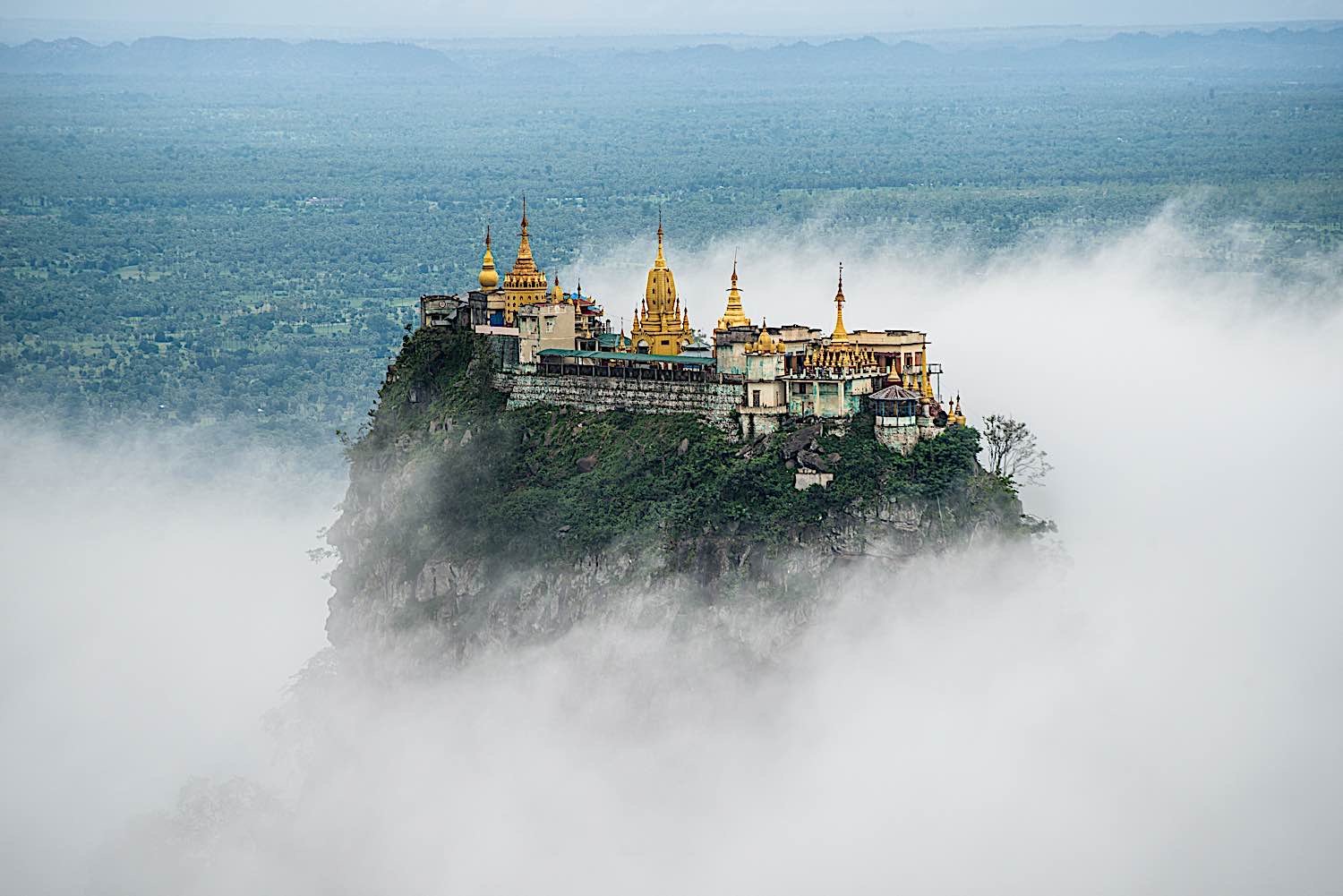
Our samsaric state of ignorance means we experience things only from our side as if we are just singular beings and not interdependent of everything else. So too, does the ghost or demon perceive its isolation or independence of arising as if it just popped into existence and was not part of a continuum and web of activity.
We generally can’t remember anything from before we were born and so to it is with ghosts. We also can not remember most dreams, and like this, a ghost cannot remember where it was born from, yet it keeps seeking and acting out of habit, very much like us.
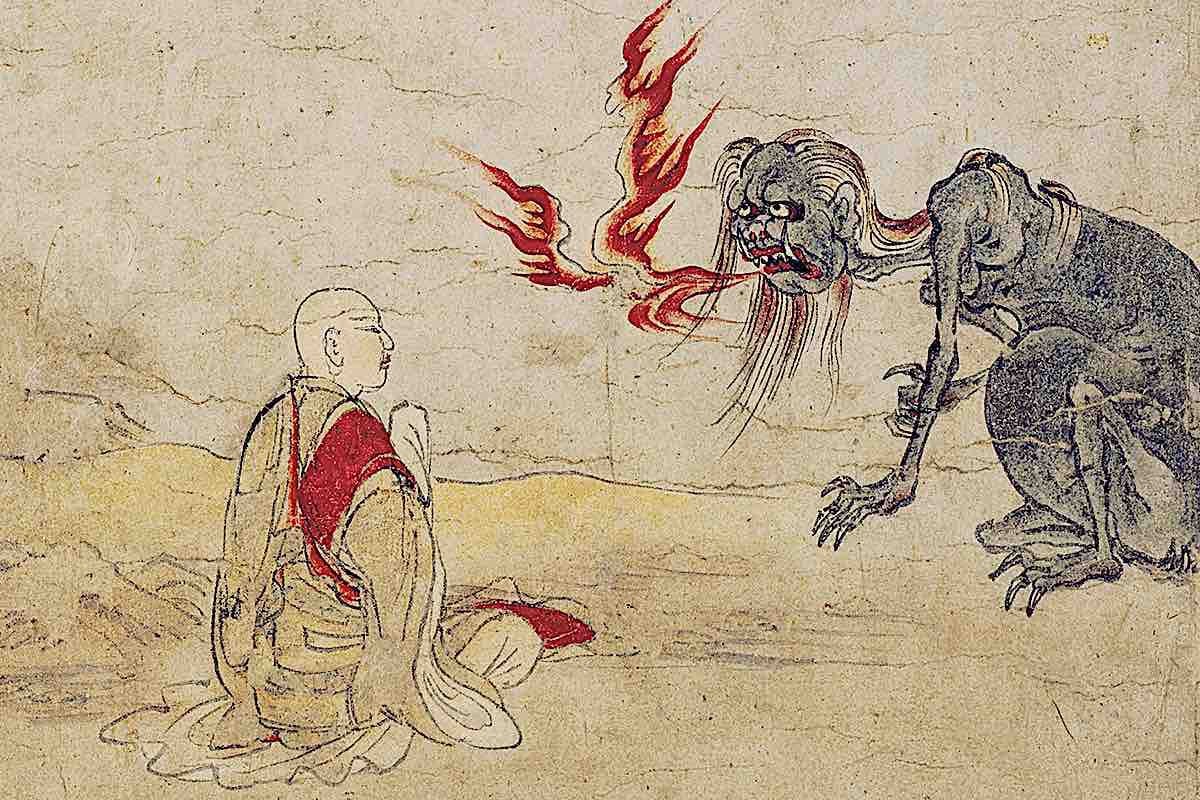
Bardos: The Mind of Our Last Dream
The mind of our last dream and the mind we carried before this birth are different enough in quality that we cannot remember them, but we are products of them all the same. The bardos of experiences and realms are also like this.
The ghost is as lost in samsara as we are in many respects. The difference is only in the quality of consciousness capacity- it is preferable to be embodied as a human and alive. From here, we can self liberate – we can focus. A ghost is even more lost in desire and delusion than we.
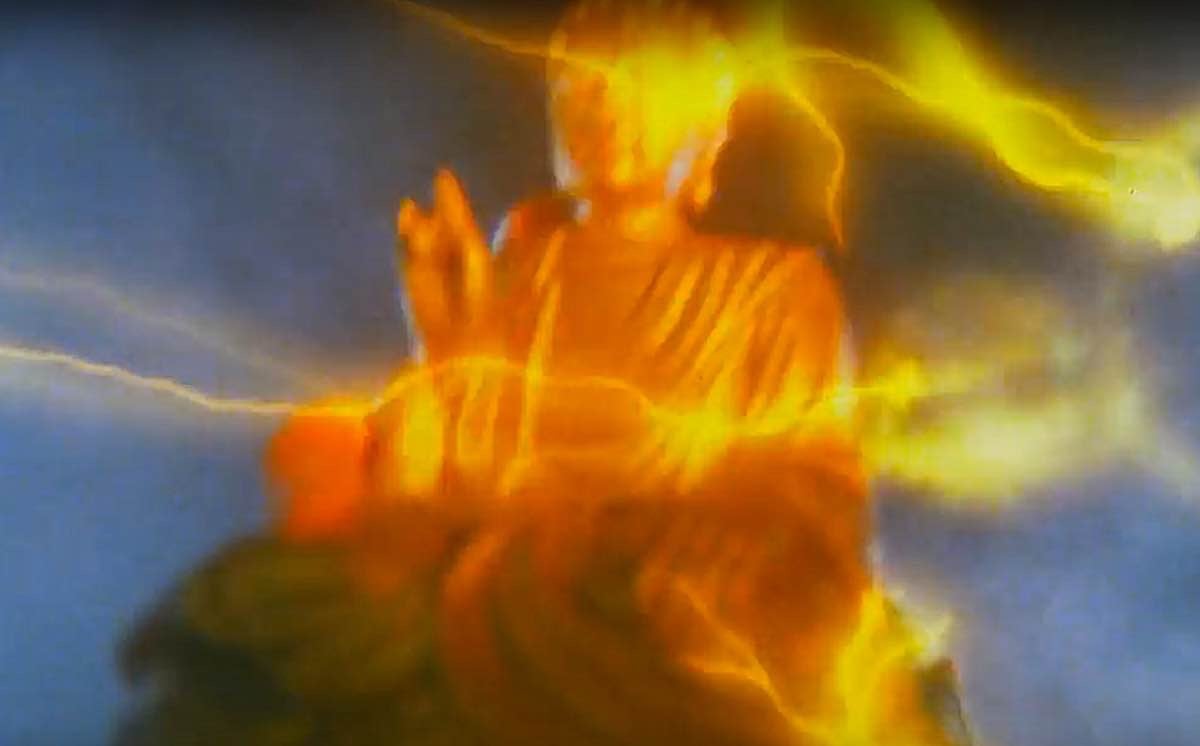
Confronting a Demon or Ghost
If we confront a demon or feel a ghost haunts us, what exactly is happening? These confrontations are likely the unconscious parts of us generally arising from our own latent and defiled mind-state such as fear, hate, anger, jealously, self-pity, loss or mourning, and the accompanying hopeless states of mind can all attract a parallel force or being. Like attracts like.
As I mentioned, these beings cogenerated in that our mental states and energetic quality and that of these other beings come into accordance and feed one another.
The western paradigm, again, would say that this is just a projection of an internal state. But this is incorrect as we perceive both these demons and ghosts as external forces and internal conditions. They relate to our inner emotional, mental, and psychic weather systems, and the two spaces of energy and awareness overlap. Not to belabor a point, but understanding this is also the way to neutralize our fear of them!
We must cultivate a view of impermanence and interdependence and then take hold of what we can control. We do so with our endogenous energy encompassing our relative, subtle, or energy body- the Sambokakaya. Wisdom rests here.
We can produce Bodhicitta! Loving-kindness and the bodhisattvas wish to liberate ourselves and all sentient beings from delusion and suffering.
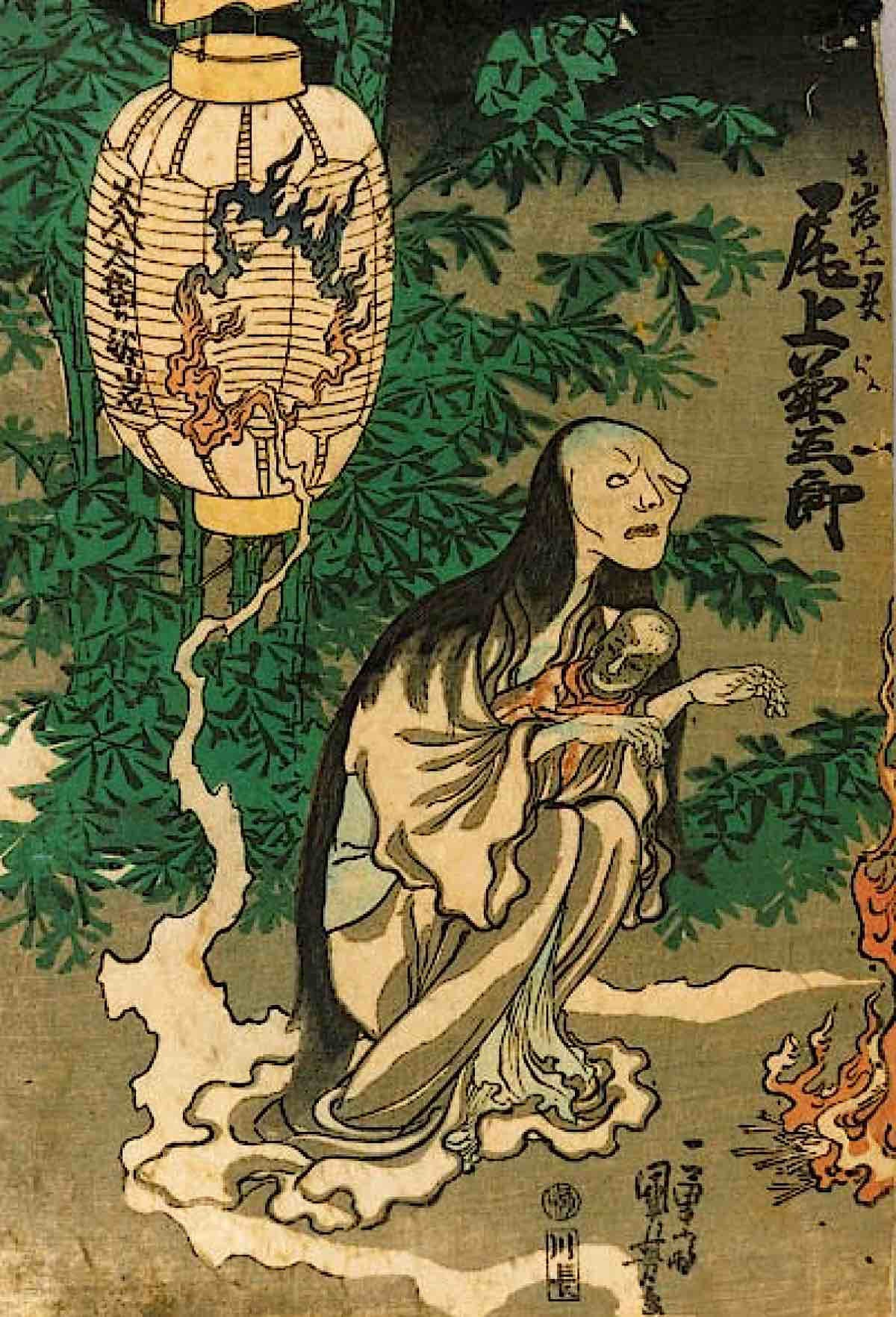
This wish allows us to disconnect from the belief that we are permanently stuck with this ghost or demon being or experience; we can take it less personally and instead open up to compassion and take our power back, as it were.
It might take time, but this view and specifically the embodied practice of building love and Bodhicitta will change our mindstream habituation, open up our energy body, and protect us from these lower states of perception.
We shouldn’t feel bad if we meet up with one of these beings. We should banish them with firm resolve that our own mind is full of love for their suffering and that there is nothing for them to seek in us. They will feel us.
And in the end, emptiness tells us that there is nothing to fear.
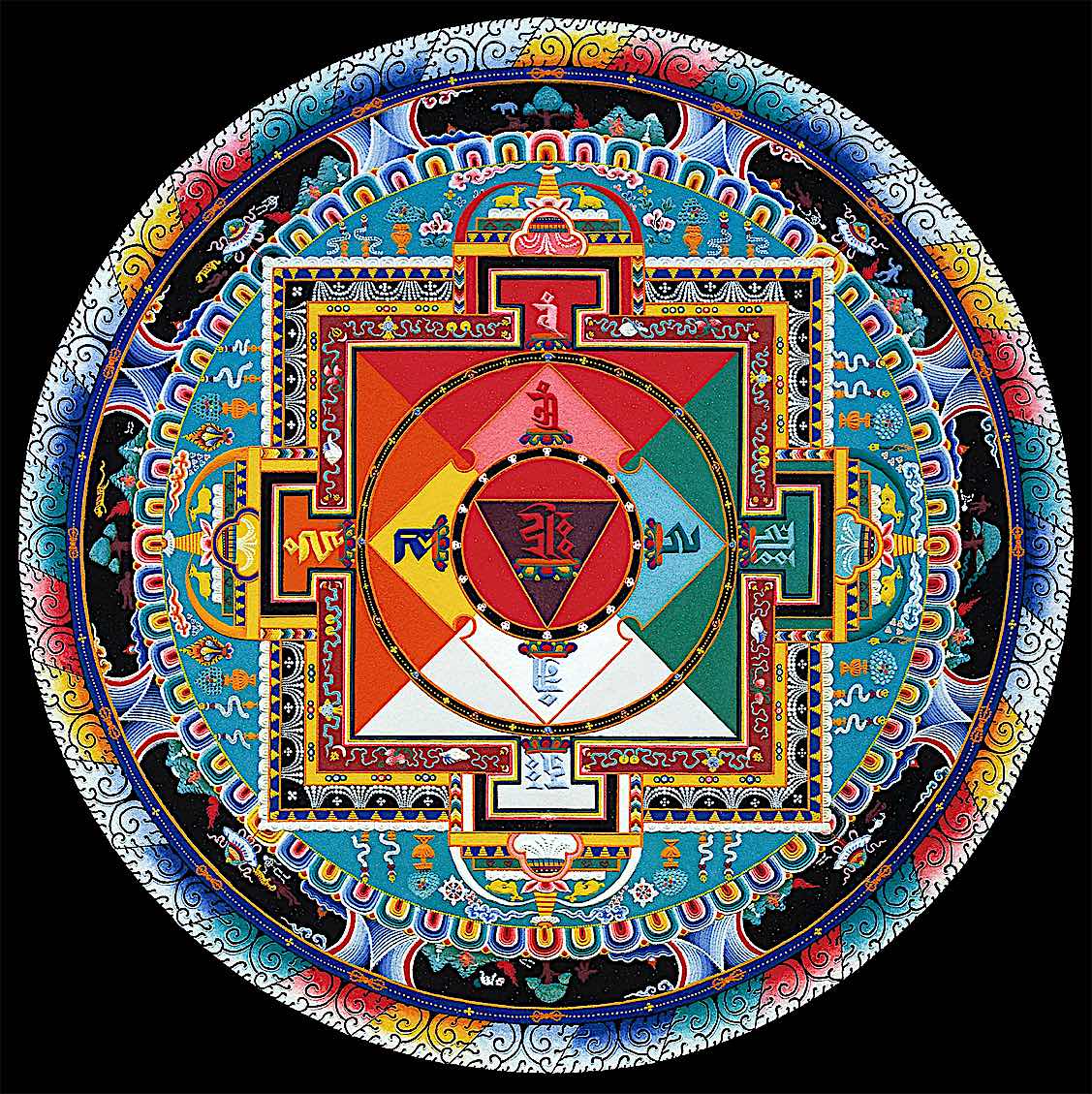
Protective Boundaries
We can also bolster our own protective space of energy by understanding our boundaries and those boundaries characterize by the type of quality we carry in our minds. That is why we purify and work with our thoughts and actions and the eight-fold path the best we can.
If we work with a Buddhist Diety and have been initiated, we can find support in this way. Buddhas themselves are cogenerated — at least our perception of them — and likewise all of these beings, including ghosts or demons, are cogenerated beings. All sentient beings have Buddha-Nature, and the dharmakaya is at rest while the dharma itself allows all phenomenal display.
We can activate this buddha nature when we act from a place of Bodhicitta with the correct view of emptiness and interdependence.
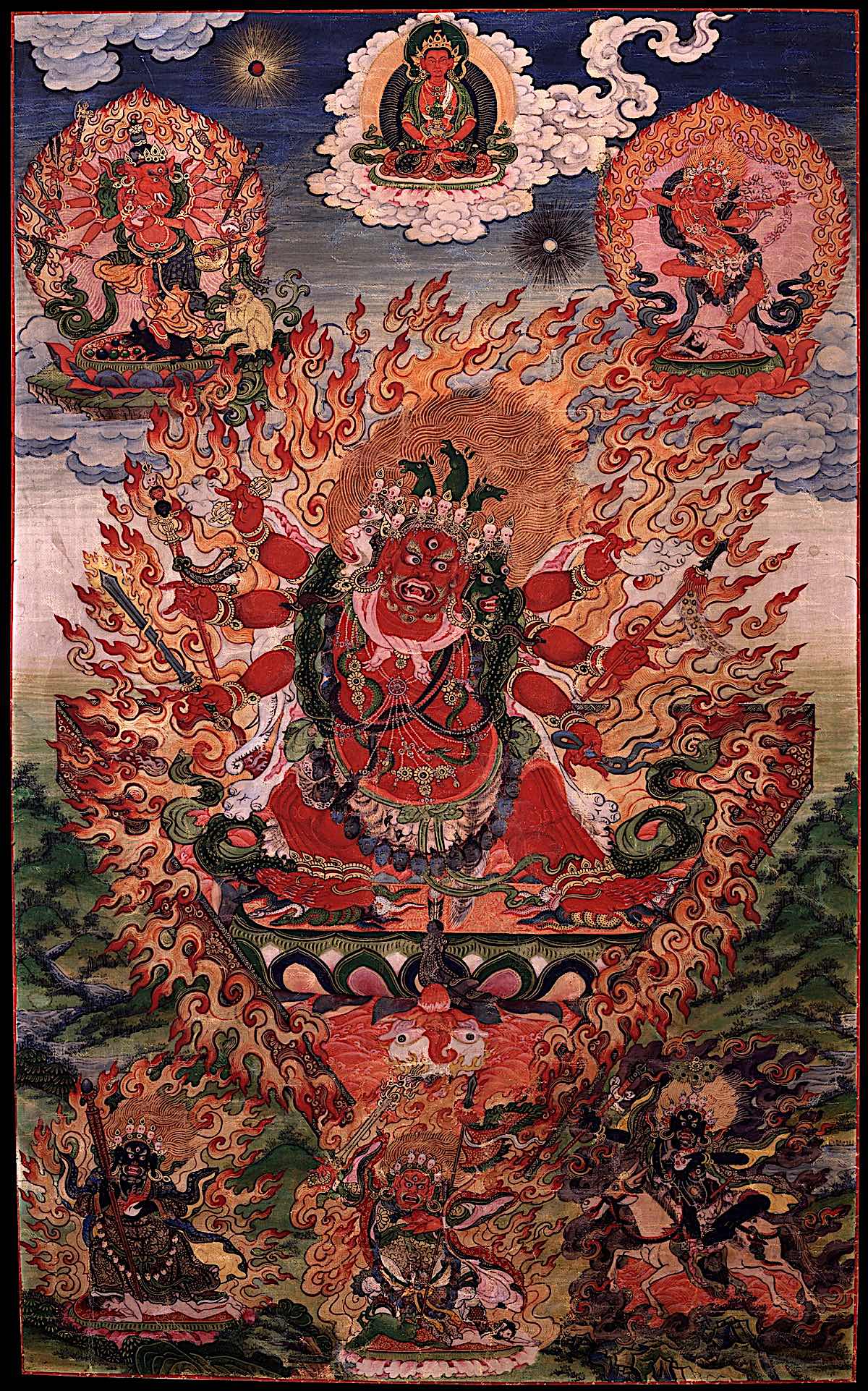
In other words, our capacity to generate altruistically and embodied love for all beings is felt by all beings. In turn, we will apprehend a different spectrum of reality, including the beings that inhabit that space.
We must generate the correct view and hold our loving-kindness and feel the truth of our innate goodness to essentially convince these mental, emotional, constructs that double as independent and externally emanating beings to cease their disturbing state. Possibly they will find liberation through our kindness- and so shall we!
If we find the experience with these beings persists, we may need to employ a loving but wrathful approach. We may need the help of a Guru, shaman or spiritually-trained adept. There are practices for this. Choose your helper wisely.
Nothing to be Scared of…
There is nothing to be scared of when we realize that what we encounter from within and without is one, and we are made peaceful when we see this.
Green Tara Mantra
Green Tara is the Enlightened Being renowned for protection. You can do the Green Tara mantra without initiation. Visualize her instantly arriving to help. Know that the ghosts or demons will be filled with aww and devotional love with Her appearance. They fall away now. They are cleared from your world. Her mantra:
Om Tare Tuttare Ture Soha
Venerable Zasep Rinpoche teaches a short Green Tara visualization (video ends with mantra):
More articles by this author
Search
Latest Features
Please support the "Spread the Dharma" mission as one of our heroic Dharma Supporting Members, or with a one-time donation.
Please Help Support the “Spread the Dharma” Mission!

Be a part of the noble mission as a supporting member or a patron, or a volunteer contributor of content.
The power of Dharma to help sentient beings, in part, lies in ensuring access to Buddha’s precious Dharma — the mission of Buddha Weekly. We can’t do it without you!
A non-profit association since 2007, Buddha Weekly published many feature articles, videos, and, podcasts. Please consider supporting the mission to preserve and “Spread the Dharma." Your support as either a patron or a supporting member helps defray the high costs of producing quality Dharma content. Thank you! Learn more here, or become one of our super karma heroes on Patreon.
Josh Reichmann
Author | Buddha Weekly
Josh Reichmann is a multi-disciplinary artist and dharma student-teacher. He relays epochal shifting visions through modernist views of spiritual practice, devotion, and creative artifacts.
His work engages clairsentience and poetry to spread Dharma and discuss the arising psychic template prevalent today.
Josh Reichmann teaches traditional meditation and uses visualization and energy work, leading recovery and mindfulness retreats for over six years. He is a student of Mahayana Tibetan Buddhism through the Gelugpa sect and uses other modalities to augment his offerings.
Josh Reichmann has released multiple musical recordings internationally and directed music videos and the feature film "Tenzin" which is spoken entirely in Tibetan featuring an all Tibetan cast. The film was presented to Cannes festival programmers on behalf of Telefilm Canada in 2018. His film work includes scriptwriting and creative direction.
Latest record link: https://joshreichmann1.bandcamp.com/releases






